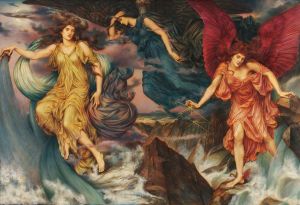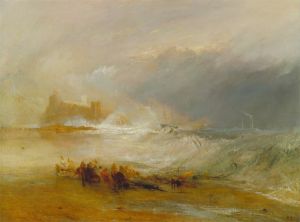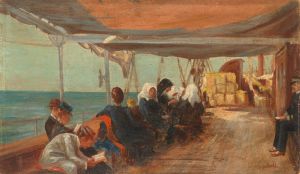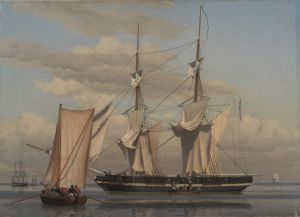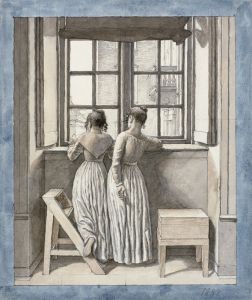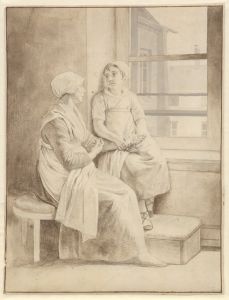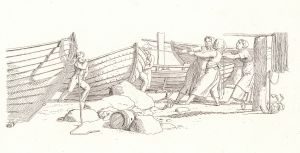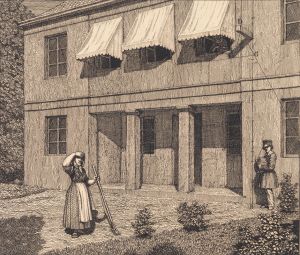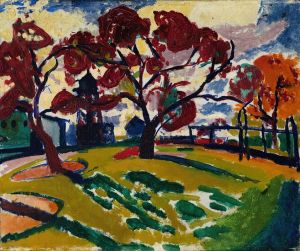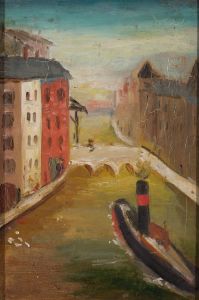
En brig med læsejl
A hand-painted replica of Christoffer Wilhelm Eckersberg’s masterpiece En brig med læsejl, meticulously crafted by professional artists to capture the true essence of the original. Each piece is created with museum-quality canvas and rare mineral pigments, carefully painted by experienced artists with delicate brushstrokes and rich, layered colors to perfectly recreate the texture of the original artwork. Unlike machine-printed reproductions, this hand-painted version brings the painting to life, infused with the artist’s emotions and skill in every stroke. Whether for personal collection or home decoration, it instantly elevates the artistic atmosphere of any space.
"En brig med læsejl" (A Brig with a Reefed Sail) is a painting by the Danish artist Christoffer Wilhelm Eckersberg, created in 1833. Eckersberg, often referred to as the father of Danish painting, was a prominent figure in the Danish Golden Age of painting. His works are known for their meticulous attention to detail and their ability to capture the essence of the subject matter with clarity and precision.
This particular painting depicts a brig, a type of two-masted sailing vessel, navigating through the waters with its sails partially reefed. Reefing is a sailing technique used to reduce the area of a sail, typically to manage the vessel better in strong winds or rough seas. The scene is set against a backdrop of a calm sea and a clear sky, showcasing Eckersberg's skill in rendering maritime subjects with a high degree of realism.
Eckersberg's interest in maritime themes can be traced back to his own experiences at sea. In 1810, he embarked on a voyage to France and Italy, which included time spent on various ships. This journey not only broadened his artistic horizons but also deepened his understanding of nautical subjects. Upon his return to Denmark, he continued to explore maritime themes in his work, often drawing inspiration from the ships and seascapes he had encountered.
"En brig med læsejl" is a testament to Eckersberg's ability to combine technical accuracy with artistic expression. The painting is characterized by its precise depiction of the brig's rigging and sails, as well as the subtle play of light and shadow on the water. The composition is balanced and harmonious, with the brig positioned slightly off-center to create a sense of movement and dynamism.
Eckersberg's attention to detail is evident in the careful rendering of the ship's structure and the interplay of light on its surfaces. The use of light and color in the painting enhances the sense of realism, with the bright, clear sky contrasting with the darker tones of the ship and the sea. This contrast not only adds depth to the composition but also highlights the ship as the focal point of the scene.
The painting is housed in the collection of the Statens Museum for Kunst (National Gallery of Denmark) in Copenhagen. It is considered one of Eckersberg's significant works, reflecting his mastery of maritime painting and his contribution to the Danish Golden Age of art. Through works like "En brig med læsejl," Eckersberg has left a lasting legacy, influencing generations of artists and solidifying his place in the history of Danish art.
In summary, "En brig med læsejl" by Christoffer Wilhelm Eckersberg is a notable example of Danish Golden Age painting, showcasing the artist's skill in capturing maritime subjects with precision and artistry. The painting remains an important part of Denmark's cultural heritage, admired for its technical excellence and its evocative portrayal of a brig at sea.






